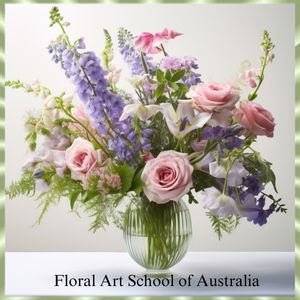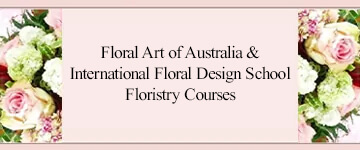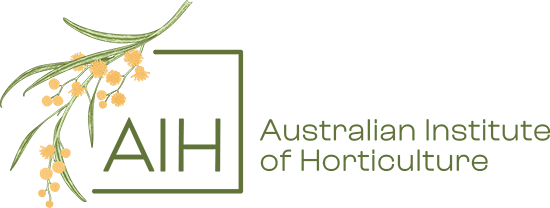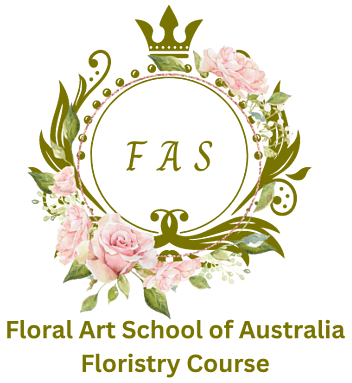Choosing Flowers and Foliage For Your Floral Designs
It is wonderful that we have so many different varieties of flowers and foliage to choose from when we are creating a floral design.
A flower arrangement will have more interest when you use different shaped flowers and foliage together.

Spike Flowers: Spike or line flowers are tall, slender flowers which are used to form the outline shape of a design. They are called line flowers because of their linear shape. Examples are gladioli, stock, delphiniums, snapdragons, tuberose, molucca balm and blossom.
Form Flowers: Form flowers make up the largest part of, and give weight to an arrangement. Examples include roses, carnations, chrysanthemums, camellias, asters, dahlias, gerberas, ranunculus and zinnias.
Feature Flowers: Feature flowers are usually the largest, most expensive flowers used in a design. Three to five are often used down the centre front of an upright arrangement. Feature flowers include large roses, gerberas,tulips, anthuriums, liliums and irises.
Focal Point :The focal point is the centre of interest, to which the eye is first attracted. Every design should have a focal point, which is often the largest or most beautiful flower. It should attract the eye momentarily. The eye should then flow on to the other flowers.
Filler Flowers: Filler flowers are small flowers which are used between the main flowers. Fillers help to give a light airy look to a design. Examples are gypsophila, misty, waxflower, thryptomene, statice and Queen Anne’s lace. Take care not to overcrowd a design with filler flowers or the result can be too busy.
Foliage: Long lasting foliage is suitable for flower arranging. Suitable types include eucalyptus gum, box, leather fern, ming fern, camellia leaves and emu grass.
Don’t Overcrowd: Do not overcrowd your arrangement with flowers or foliage; what you leave out is just as important as what you put in.
Allow room between the feature flowers so the outline of the feature flowers show.
Don’t Fight Nature: Arrange flowers like they would grow naturally. Position flowers that curve to the right on the right side and flowers that curve to the left on the left side of the arrangement.
When more than two and less than ten flowers are used, it is often easier to work with an uneven number. If you have more than ten, it does not matter. In modern designs this rule is often disregarded.
Three to four different types of flowers are usually enough for the one design. (This rule does not apply to large mass arrangements where a variety of flowers are used).
You will learn how to choose flowers and foliage that go well together for your floral designs in the Floral Art School of Australia and International Floral Design School Floristry Course.
For information about the Floristry Course Please CLICK HERE
Make your life bloom – we would love to help you fulfil your dreams in floristry.
If you have any questions about the course please contact us – we are here to help
Email: info@floral-art-school.com.au
Phone: 03 8555 9774
Warm Regards
Fay Chamoun (Principal)
Floral Art School of Australia and
International Floral Design School





